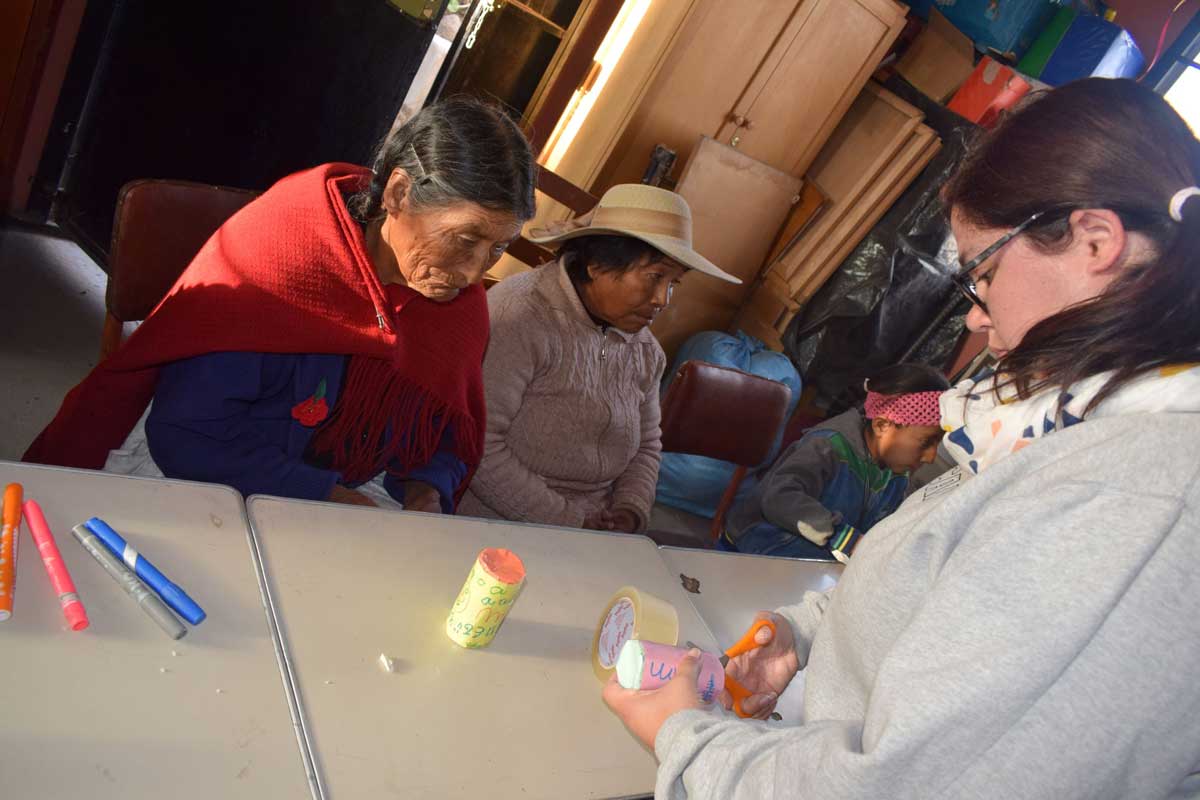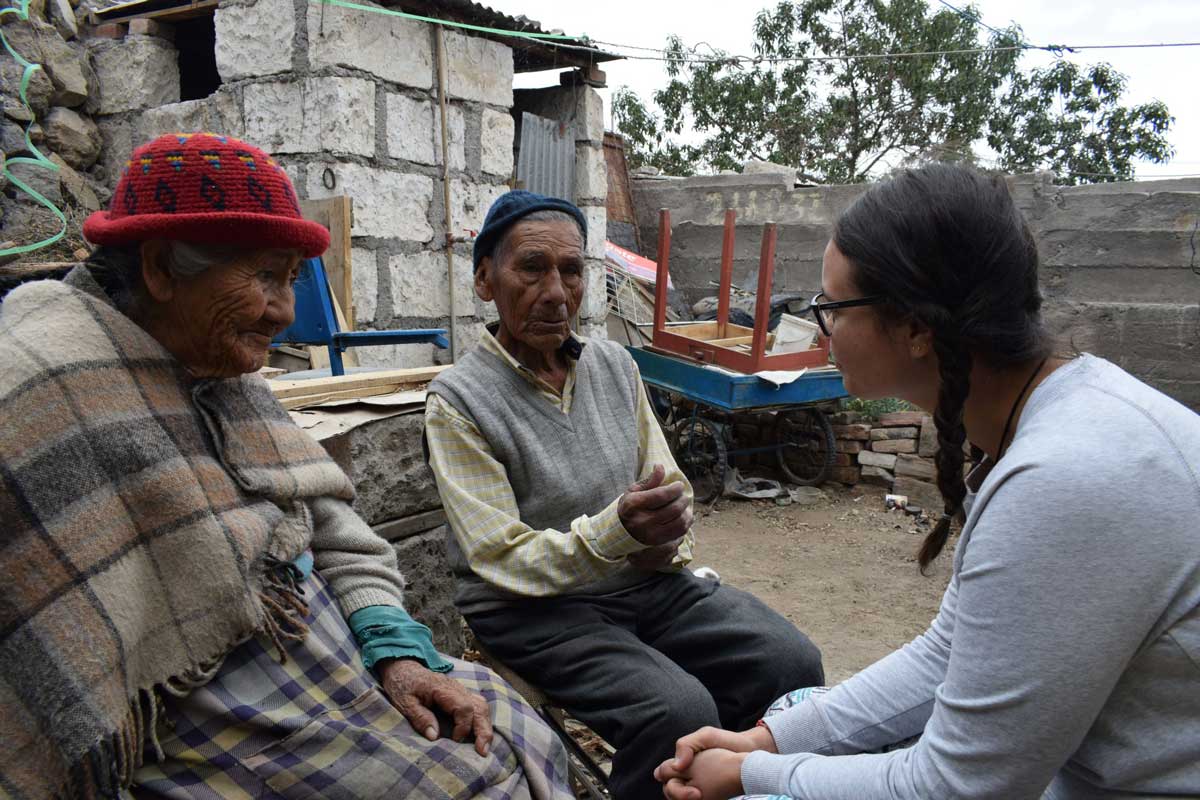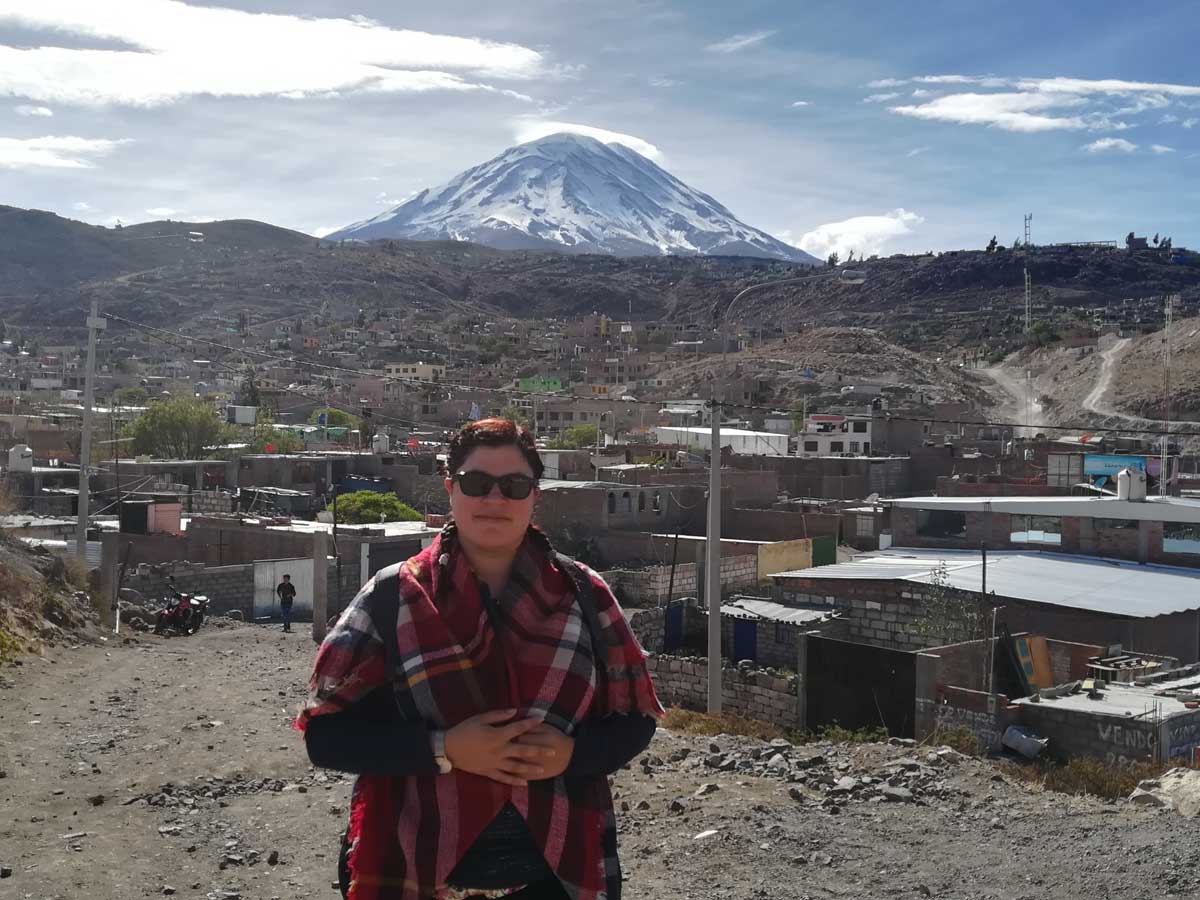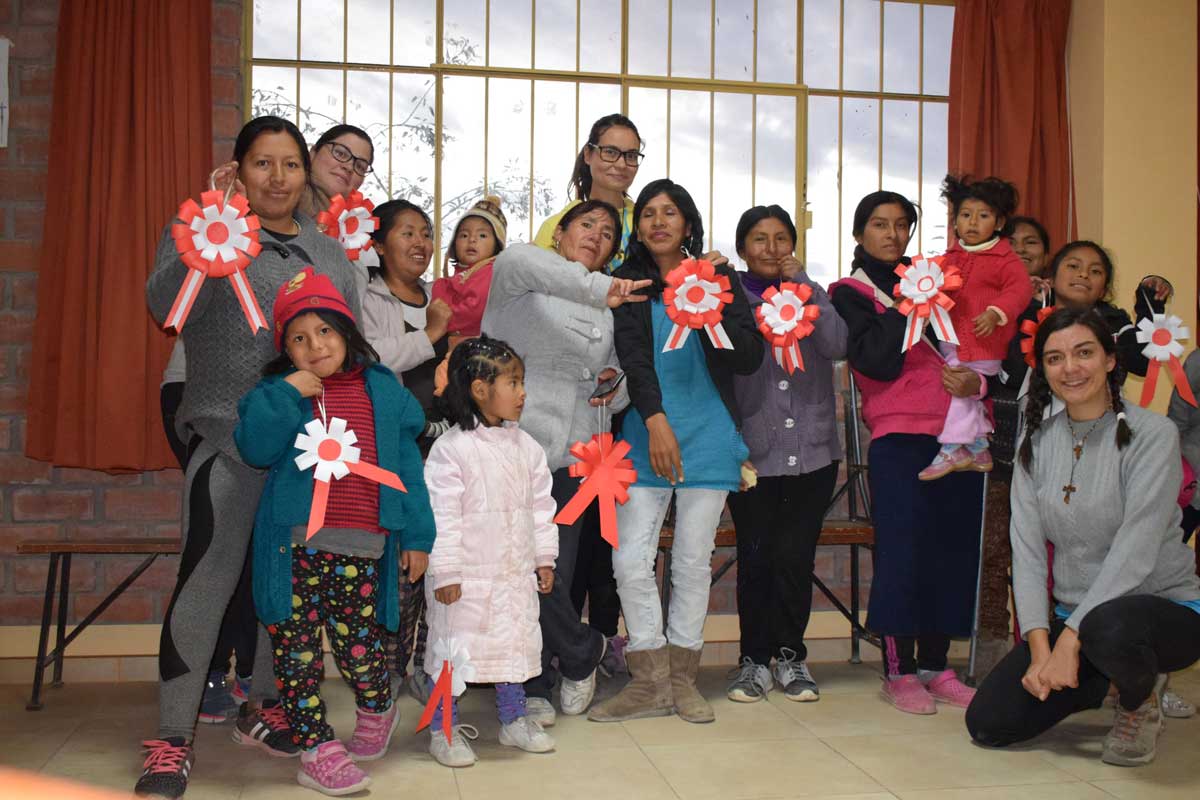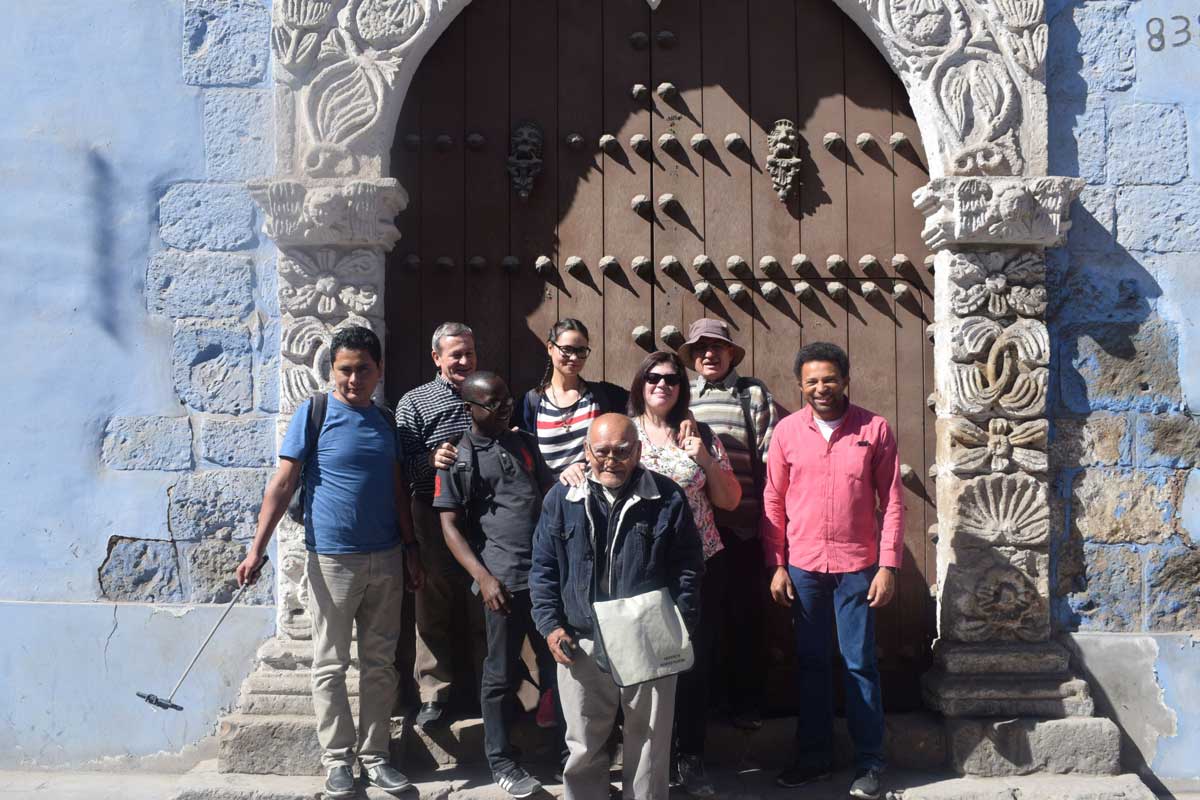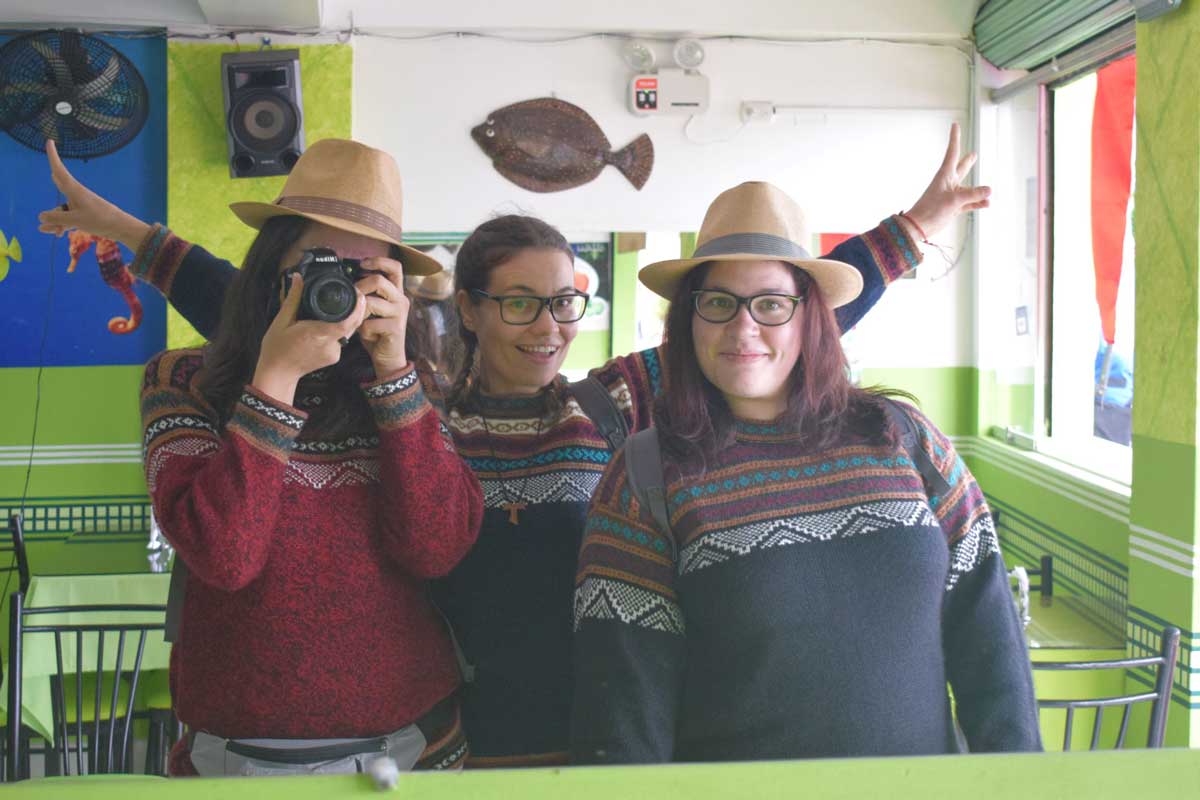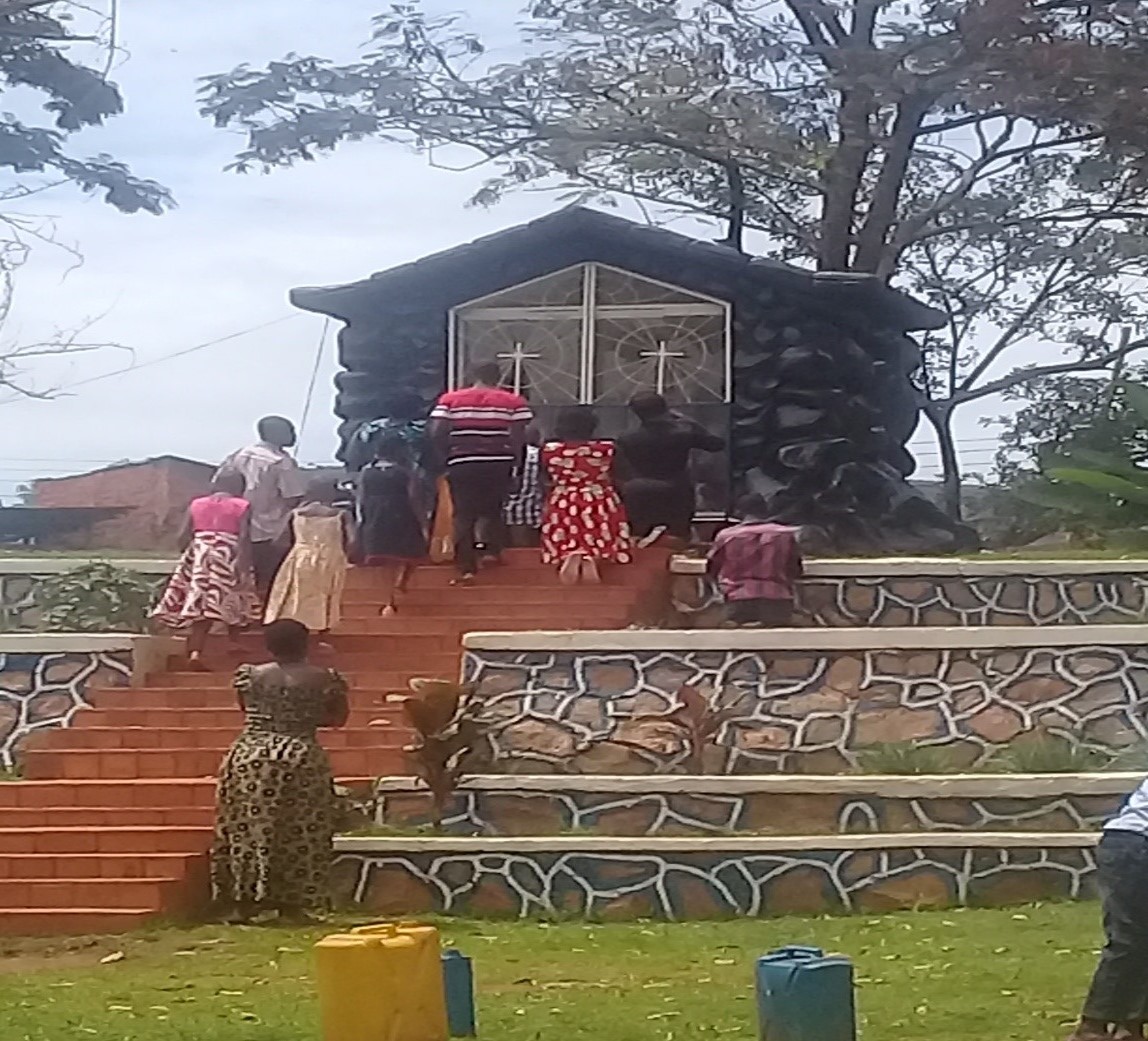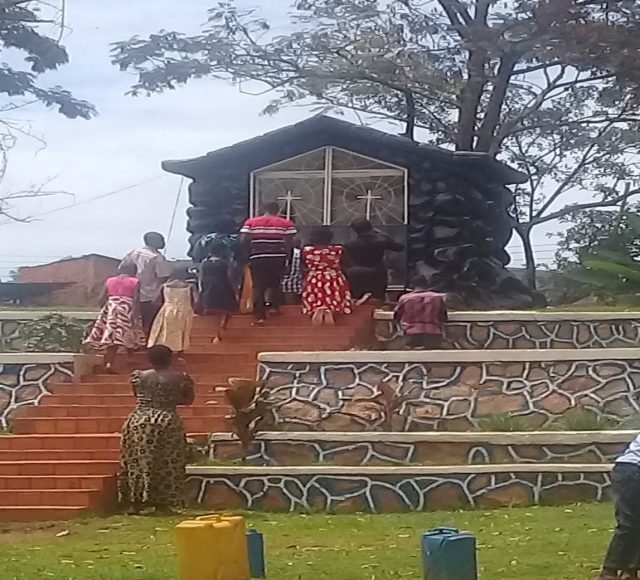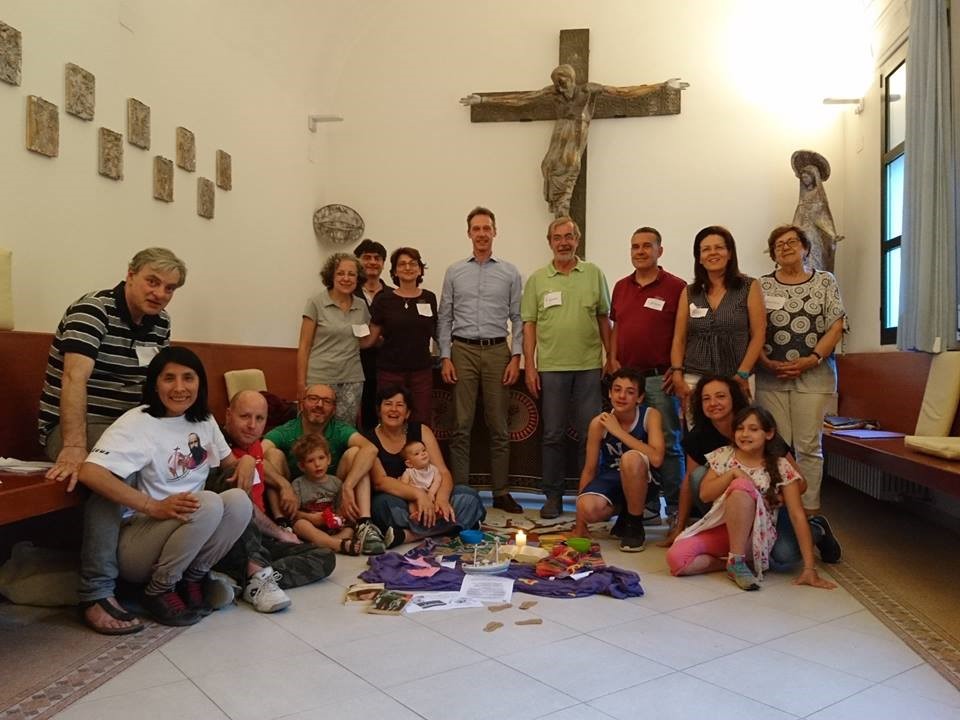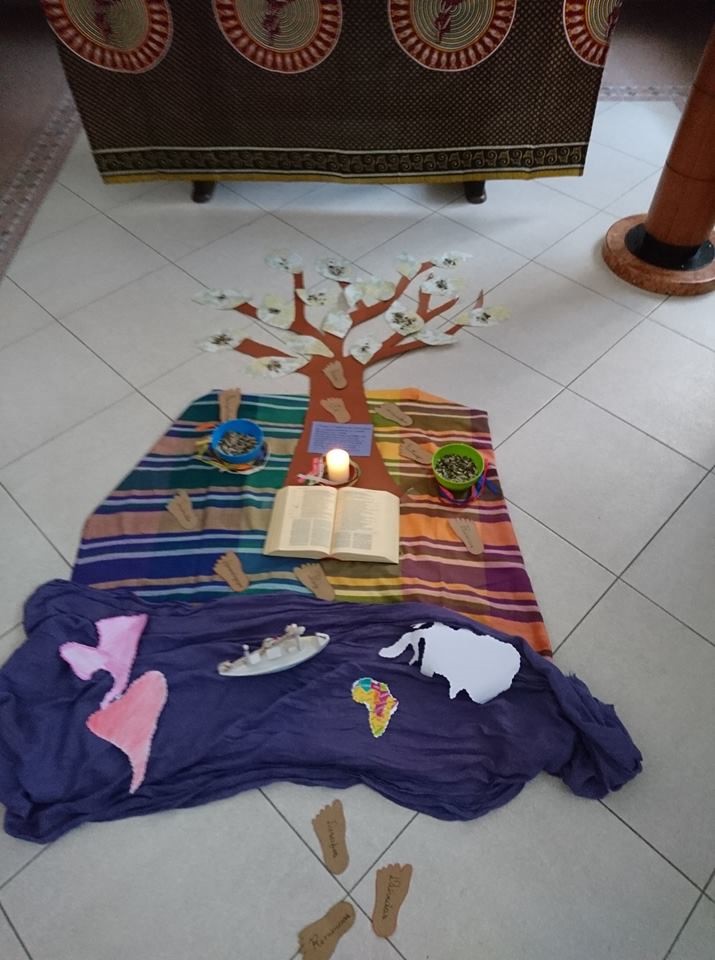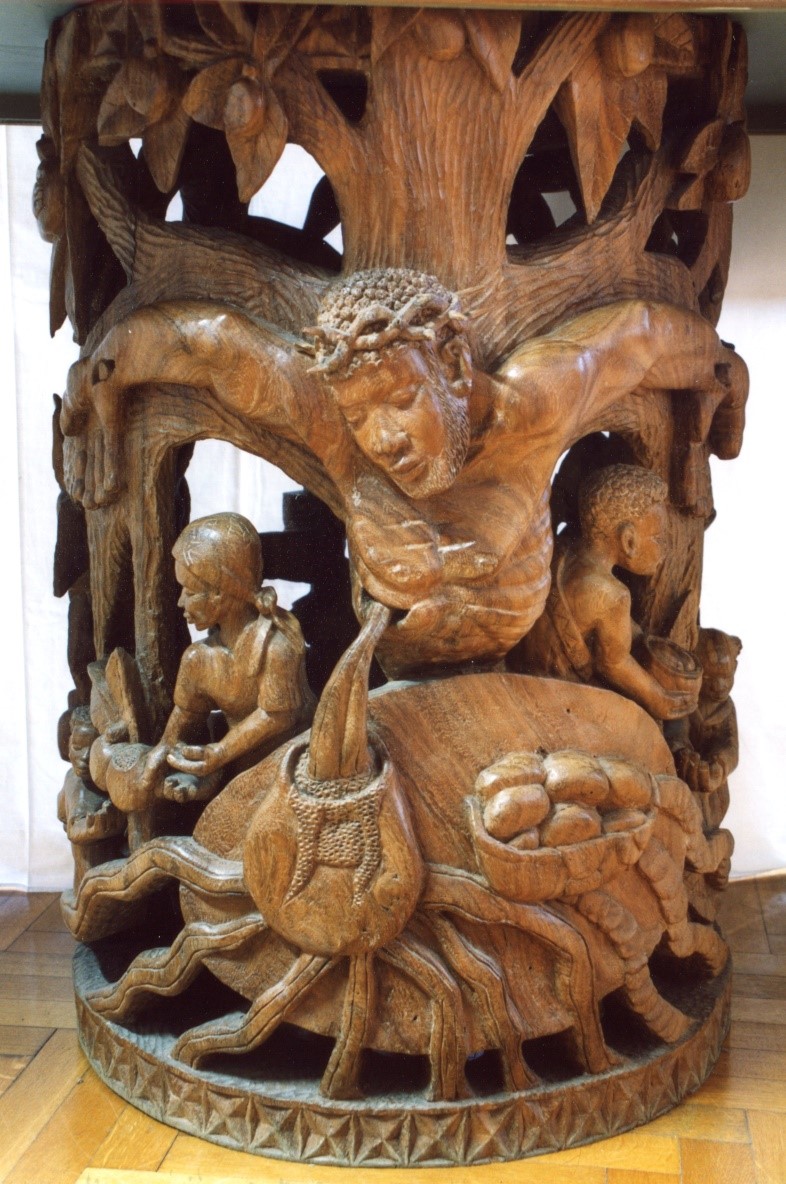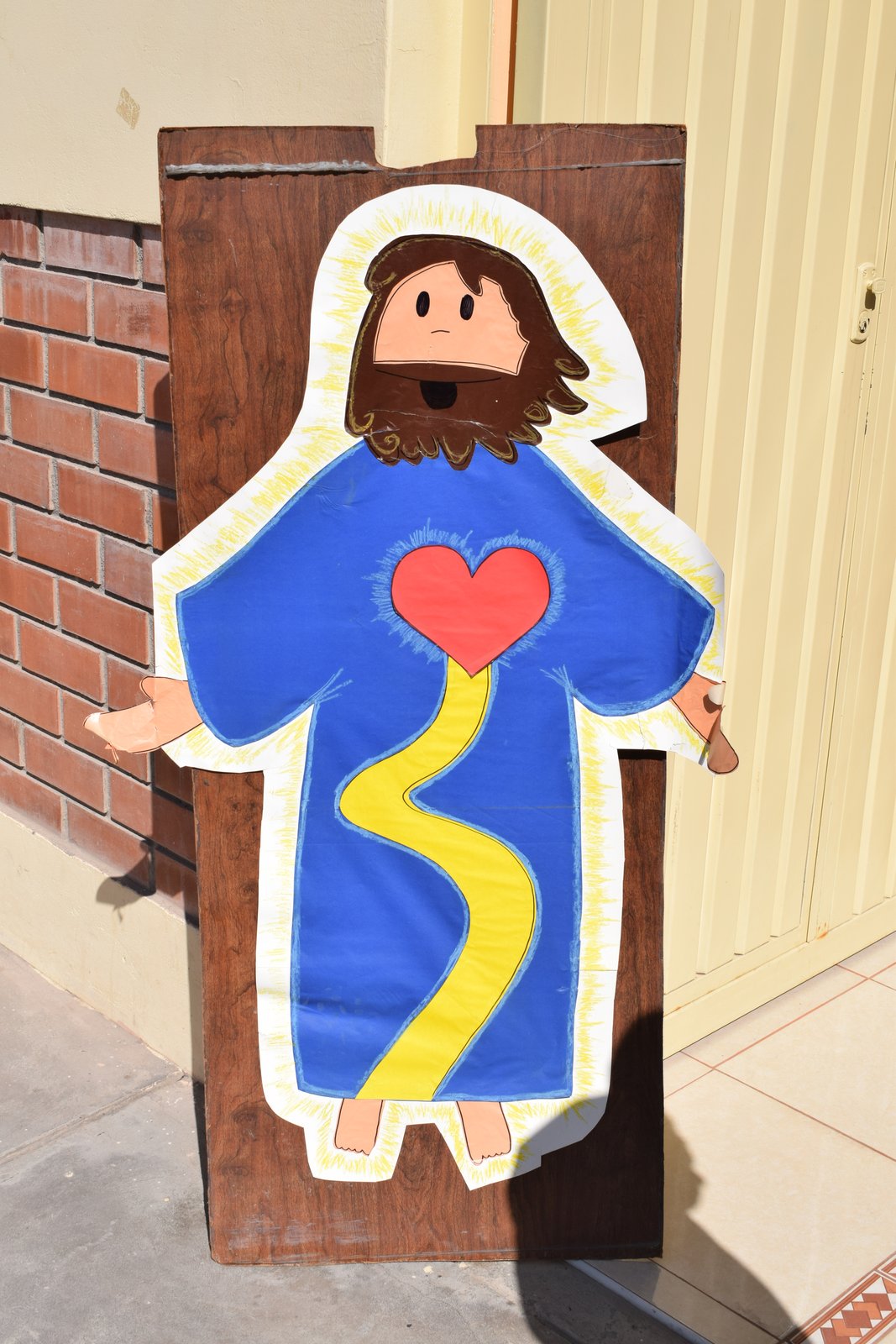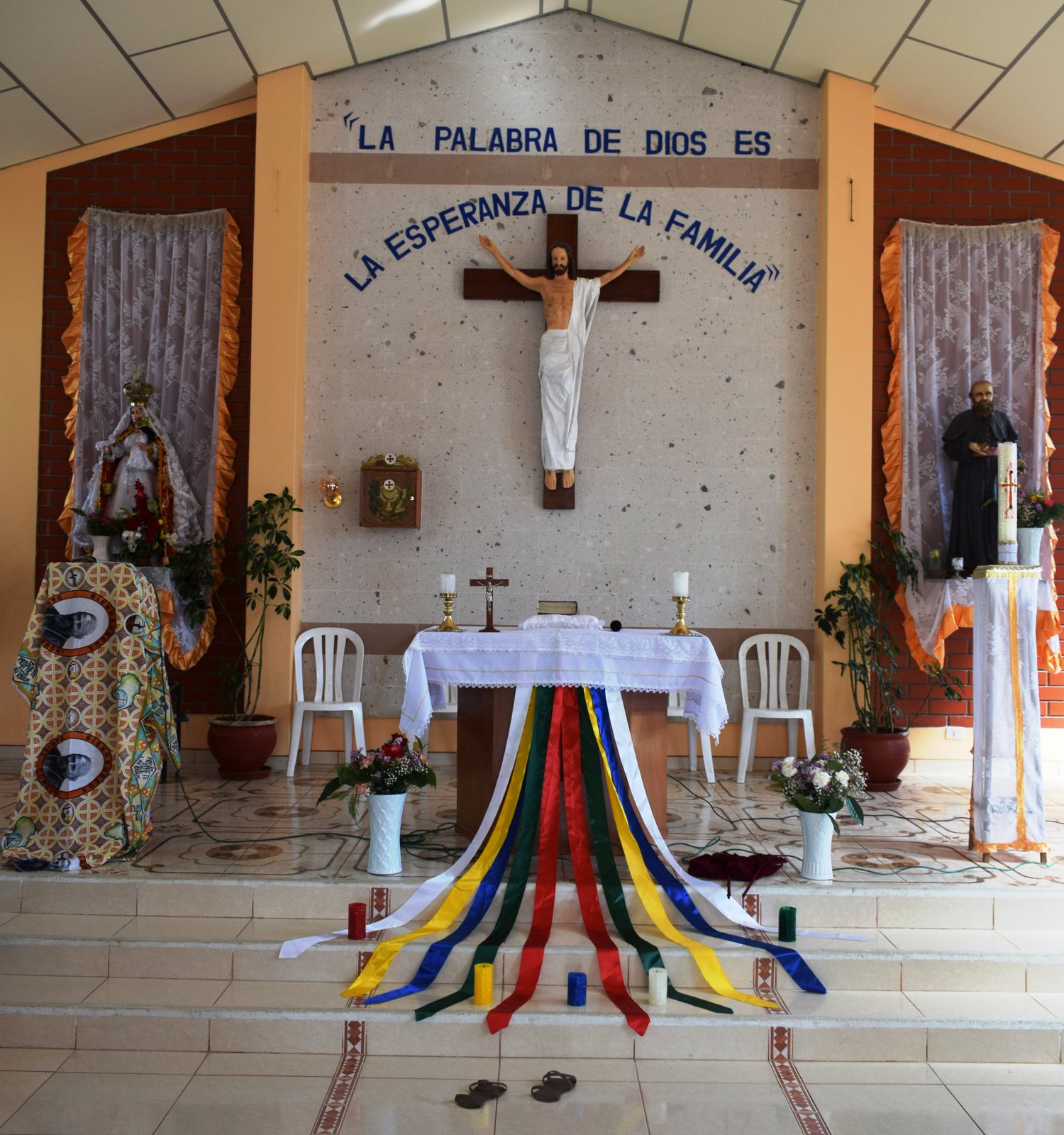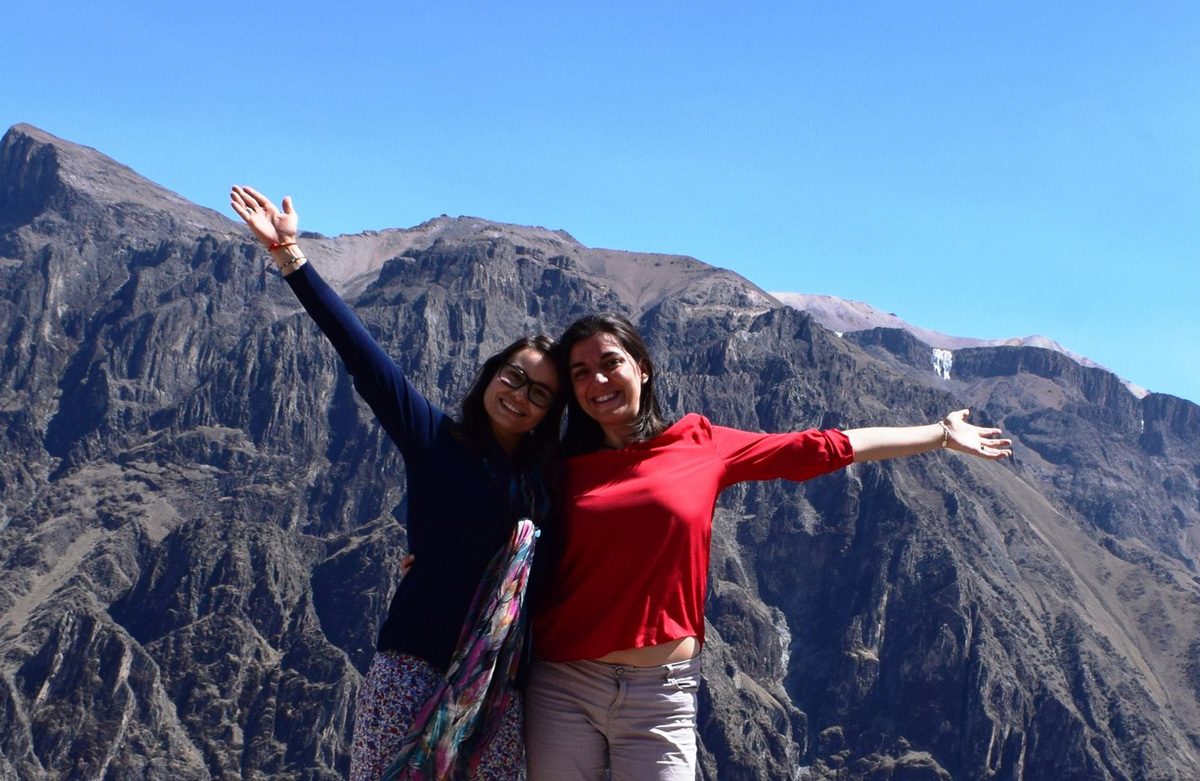I have already been here for two weeks and I do not know whether it is a lot or too little.
I already got used to the kitchen and know where everything is and I even baked a sponge cake (yes, we have an oven!!). I also got used to the taste of water and to the routine of boiling it and at time having to drink it while still lukewarm (considering how little I enjoy hot water even in winter…).
The sleeping is super because Paula gave me her bed which is the best and the largest. Some evening, when it is not too late, the three of us fit together on this bed to watch a show or a movie, remembering the old days in David’s home. In any case, the rooms are really cubicles divided by partitions that do not reach the ceiling and with an opening for the door, but without it. So that basically it is like being all three in one room. We can converse each one from our own bed without a problem.
But I have yet to get used to the dust that invades my lungs whenever we leave the house and becomes downright horrible when a vehicle goes by.
I have already heard a couple of earthquakes and have caught a cold with the changes of temperature and during the last gray days we just had.
It is still fascinating go outside and see the volcano Chachani close to 20 thousand feet tall, so great and majestic with its snow shining in the sun, and the Misti, a mere 19,000, that is visually overwhelming because we are so close to it, almost in its foothills. These days it appeared with a dusting of snow.
At the beginning I was feeling a little out of sort, but I am now getting used to the girls routine and activities.
The nursery (child care from 2 to 5 years old) is the easiest place for me because the children are beautiful and charming, even though, as all children, like (or would like) to do what they want. On Tuesdays and Thursdays we go to the project “My school, my Family and Me,” where some children stay behind for a while engaged in activities that will improve their socialization, autonomy and language skills… It is always done with fun activities and games and then we eat together. The project demands the involvement of the families that we follow and keep informed. It was interesting to attend the meeting with the director of the nursery, who is the teacher involved in the project, and two psychologists speaking on the development of the children, their family situation, discussing the possibilities of visiting families who are not answering the commitments agreed upon… Even though this is what could be considered an “elitist” project, since it is only for 20 children picked because of their needs and conditions, it is clear that in order to do it well it cannot be a mass venture. The personal attention we give them is very good and it pleased me to see how they know the reality of each child and their environment.
With the senior citizens there is a program on Wednesdays where they perform activities to improve their mobility, do something manual, pray together and play some simple games. With the women’s group they meet every Saturday and try to provide someone who can help them, at times with psychological topics in order to help them with personal questions, at times with manual activities… From what I understand, in both projects there is an attempt to form groups so that they will socialize among themselves, to motivate them so they will not get rusty, to have them have some fun and help them to stay strong to put up with their problems and daily activities. Especially with the women, they bring in other people (psychologists, teachers…) to run the sessions so they will see different faces and experiences, but lately some people have been missing and it is a little bit of a drag.
In all these activities I have been mostly a spectator, but already this week I took care of the senior citizen session and we made a “rattle” with rolls of toilet paper . The truth is that you make most of it yourself, but it was OK because we gave them time to personalize it and so they were drawing. Since it coincided with Carmina’s birthday, Paulina brought a cake to celebrate her birthday and my arrival and we all sang Happy Birthday with our seniors and with some children Carmina had brought along. It was very nice.
With the women we made rosettes with the colors of Peru because on July 28 we begin to celebrate the independence of the country and it is a National Holiday . It is an important celebration that lasts a week. In fact most places are already decorated with these rosettes, flags and wreaths. Today, even the Mass was dedicated to this feast and everything was suitably decorated .
Family visitations are a little harder… It is tough to see how people live: junk all over, garbage, dust… Almost all the visits are to older people who are somewhat abandoned and rather pitiful… On top of that, they want to make sure that you get a slice of fruit or they invite you to have bread and tea. We also visit people who are sick and we also went to see families who just had a child or are about to have one and brought them some baby clothes. I am impressed by the capacity Andrea and Paula have to raise their spirit. They know their history and listen with kindness and patience, and do not have a problem to shift gears and give them a massage or help them in whatever they might be doing, such as cleaning, cooking… They roll up their sleaves!
We have also been at the hospital to visit some neighbors. The hospital is rather gloomy and old, but I am told that it is not one of the worst in the region. Then there is the financial situation… Here some people have the right to the SIS (Total Health Coverage offered to the needy) but they do not always get it, or the procedure becomes very laborious. Andrea and Paula help people with these steps as well. The classic case is to try to get money in way, which is usually with a chicken roast where a family asks the neighbors’ help to prepare fried chicken, potatoes and beans to be sold and make some money. Already in these two weeks we went to visit a very dear neighbor who was very sick, but is now getting better. He always welcomes us with joy and affection. Last weekend we were going to give a hand to his wife in preparing the chicken roast, but we were delayed at the meeting of parents at the nursery. On Sunday, we went to pick up our plates in order to cooperate and he told us that he had gotten a lot of help from relatives and friends. It is beautiful to see how people support one another in these situations, either by cooking or by buying.
On Wednesdays Fr. Corrado comes and we have the Eucharist in the Comboni Chapel of Villa, which is a rather intimate setting because only few people attend. On Sunday there are more people, including the catechism children and the confirmation young people, who have their classes before Mass. The young people who play the guitar and sing never miss. Andrea and Paula started meeting with them, but now the majority moved on to be catechists and two commitments a week are too much, so that regretfully they had to let these meetings go. The close relationship, the cooperation and the affection they have with them is very evident. They are super nice with me as well. In general they all extend to me the love they have for them.
Last Saturday there was a day for the candidates for Confirmation from the various chapels. It was held in Comboni Hall, next to the Comboni Missionaries’ church of the Good Shepherds, located in Independéncia, a slightly better neighborhood with asphalt and located closer to the city. They asked us to give a talk, “Jesus calls you,” and also our personal witness. It was hard but, between the three of us, we came up with a neat interactive presentation also as a way of organizing our witness. Finally we ended up with a very cool session, even though it was short because there were about 50 young folks and it was difficult to elicit their answers. But I think they liked it.
We also go to Independéncia on Thursdays to pray Lauds with the Comboni Missionaries. Then we join them from breakfast and usually a meeting. The first week, some were going to the doctor, Corrado was leaving for Lima, so there was no meeting and we strolled back home. On the way we arrived at a place where we took pictures of the panoramic views of the volcanos, while even saving time to visit some old folks. They are wonderful, but they discuss a lot, intensely like adolescents. It is funny how they accuse each other of having someone around somewhere, when they are both as wrinkled up as raisins, and she is almost blind while he is deaf. An interesting couple.
This week we had the meeting which, to my surprise consisted in the lectio divina on the Sunday readings followed by a short meeting (what I considered a meeting) to organize upcoming events. At that time Corrado told us about the death of Fr. Jaime, a greatly cherished Comboni Missionary who worked in Arequipa for 10 years. Some anecdotes surfaced. On Monday we will have a Mass for him at the Good Shepherd.
I am happy that they have this weekly activity with the Comboni Missionaries that helps us to feel like a family. This way we do not relate only with Corrado, the pastor who usually comes to Villa, but with all the other fathers and brothers. Also, when there is a celebration we are invited, if they remember… Last Monday we went over to say goodbye to José who is going to Kenya. We spent a wonderful day in Moquegua (photo 8) where we visited the downtown and the museum of pre-Hispanic culture, and in Ilo, on the Ocean, where we took a boat ride and ate in a cevichería. We got our fill of riding a bus, but we took advantage when going by singing and sleeping, and coming back by chatting about our vocations with Frs. Corrado and Isidro.
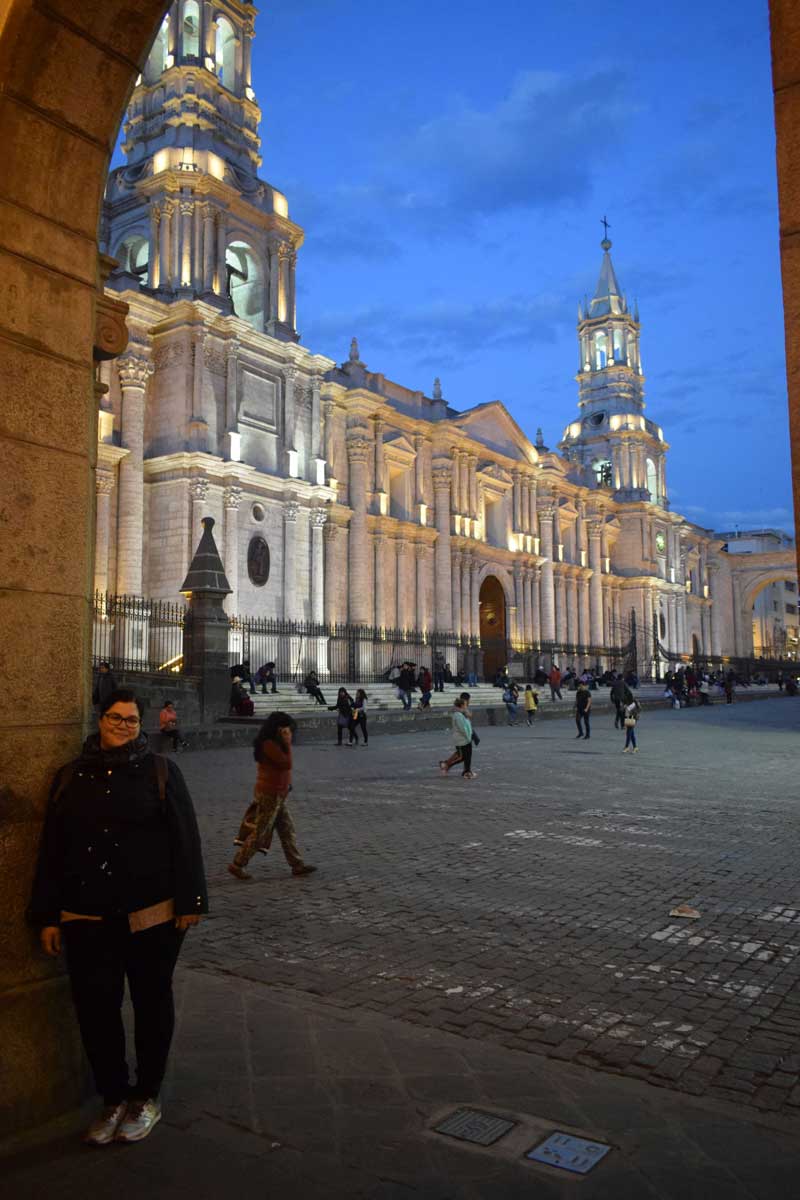 We also had a ‘tourist day’ of our own through the downtown area of our city, taking advantage of our community day. Camera in hand, we visited the churches in the area and the Plaza de Armas.
We also had a ‘tourist day’ of our own through the downtown area of our city, taking advantage of our community day. Camera in hand, we visited the churches in the area and the Plaza de Armas.
The truth is that I see them more inserted and adjusted. They have control over situations, give time to the people without caring about their time or what they want to do, help in all activities wherever they are or are invited to join, are present in the parish and also have their own initiatives and projects, etc. But they also take time for themselves, or to stay home and pray together, to watch movies and shows, to write or read, and speak with their families… It is a very good witness and to share it with them is something special.
Very often I still find that I am out of it, when they speak of people and events, or something happens and, at a glance, they already know how plans have changed, while I am literally two steps behind, lost and understanding nothing. But this is normal, even though they make an effort to bring me up to date and to include me, it is difficult to summarize 10 months of living. So that I try not to be upset or feel bad, but rather simply listen and, if needed, ask.
I am happy when, during interminable bus rides, meals of community prayers, neat conversations come up on how they feel, how these months were, how they lived through this or that situation and how they do it now, how they faced (and at times still do) comparisons with other people who were here earlier, especially with Gonzalo and Isabel who are still much remembered by the people, because logically they had different ways of doing things. Then there is the relations with the Comboni Missionaries, and the Camilas, another religious group working in the area, and also with the Portuguese lay people. And there is no lack of conversation over plans for the future, dreams, desires… A lot, a lot of living.
And I also love the fun and laughter of every day, this touch of craziness they have, to see shows stretched out together in one bed, singing in the kitchen… Naturally there is no lack of reproaches and misunderstandings, because we all have different tastes and ways of doing things. But in general, we mix well and enjoy one another, I think.
We will continue to live and share this time of joint mission, discovering what life offers us each day among these people.
Kisses to all. I love you
Aitana CLM






